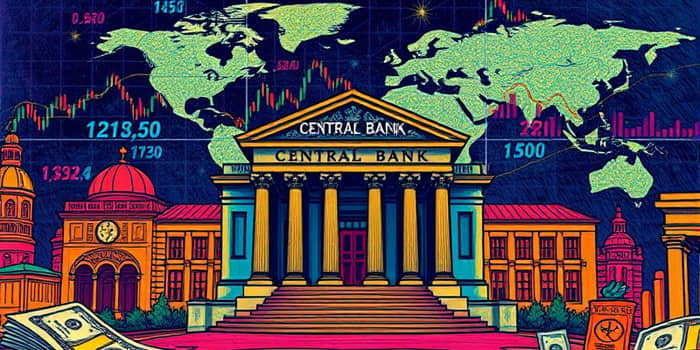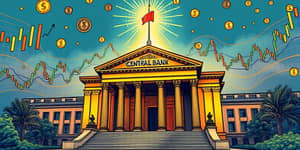
Interest rates are a powerful force, shaping economic decisions and market trends around the globe.
Interest rates represent the cost of borrowing money or the return savers earn on deposits. They are expressed as a percentage of the principal and come in two main forms:
These rates underpin decisions by consumers, businesses, and investors, influencing spending, investment, and saving patterns.
Central banks like the US Federal Reserve or the European Central Bank set benchmark rates to fulfill monetary policy goals. Rate decisions are influenced by:
Committees such as the FOMC or the ECB Governing Council meet regularly to review data, discuss forecasts, and vote on rate adjustments based on these factors.
Understanding the relationship between nominal rates, real rates, and expected inflation is vital. The famous Fisher equation links these elements:
i = r + πe
Where i is the nominal rate, r is the real rate, and πe is expected inflation. If lenders anticipate higher inflation, they demand higher nominal rates to maintain their real returns.
Interest rate shifts ripple through the economy, affecting spending and investment decisions:
For example, during the COVID-19 crisis, central banks slashed rates to near zero, aiming to support economic recovery and sustain employment levels.
Interest rates and asset prices share a close, often inverse, relationship. Changes in rates can trigger rapid adjustments across stocks and bonds:
Higher yields on newly issued bonds can lure investors away from equities, altering capital flows between markets. Stock sectors also react differently: financial firms may benefit from wider lending spreads, while capital-intensive industries face higher funding costs.
Different industries experience rate changes uniquely:
Understanding these distinctions helps investors and business leaders navigate shifting conditions more effectively.
Actions by major central banks resonate worldwide. A rate hike in the US can:
• Attract global capital to dollar-denominated assets, strengthening the currency.
• Pressure emerging markets with dollar-denominated debt, raising borrowing costs.
• Prompt other central banks to adjust their own rates to maintain competitive exchange rates or control inflation.
This interconnectedness means that local policy decisions often have far-reaching implications for international investors and economies.
Recent history offers clear examples of rate policy in action:
• During the 2020 pandemic, major central banks cut rates aggressively to cushion economies from lockdown effects.
• In 2022, a global wave of rate hikes emerged to combat surging inflation, with central banks like the Bank of England enacting rapid increases.
• In September 2024, the US Fed trimmed its benchmark rate by 50 basis points to a range of 4.75%–5%, signaling a pivot toward growth support.
Interest rate decisions balance multiple goals: controlling inflation, fostering employment, and preserving financial stability. However, policymakers must navigate:
• Lag effects, as rate changes often impact the real economy with delays of several months.
• Market expectations: forward guidance and communication strategies significantly influence investor behavior.
• External shocks, such as geopolitical events or supply disruptions, which can alter inflation or growth outlooks unpredictably.
Interest rates are more than numbers set by policymaking bodies—they are levers that drive consumer choices, corporate investments, and market valuations. By understanding the mechanisms behind rate decisions, the Fisher effect, and the transmission channels across sectors and geographies, individuals and organizations can make more informed financial decisions.
As the global economy continues to evolve, staying attuned to interest rate trends and their wide-ranging impacts remains essential for investors, businesses, and policymakers alike.
References













